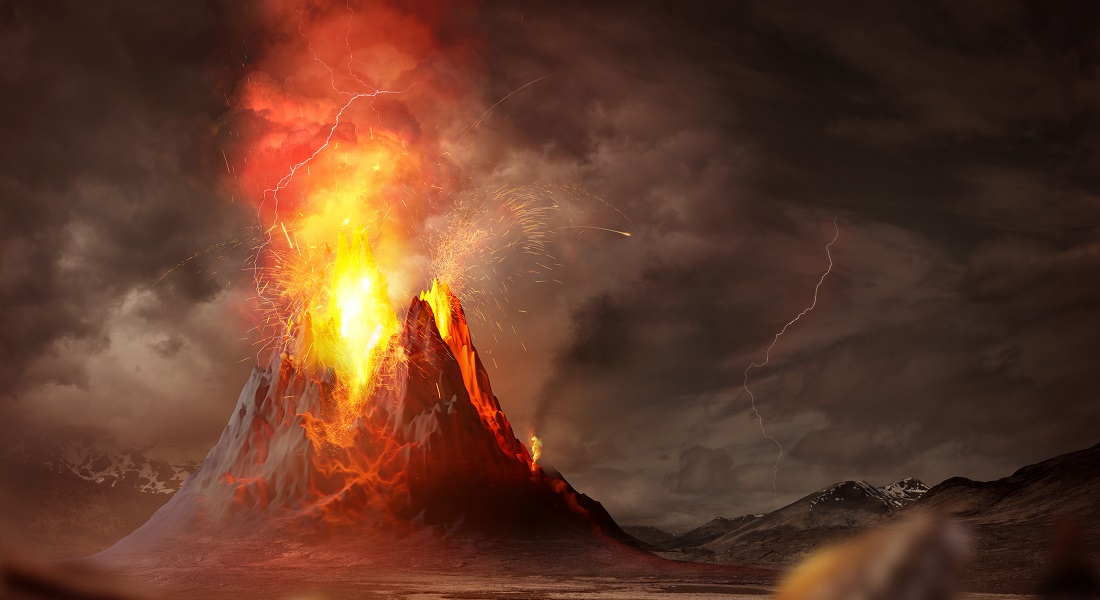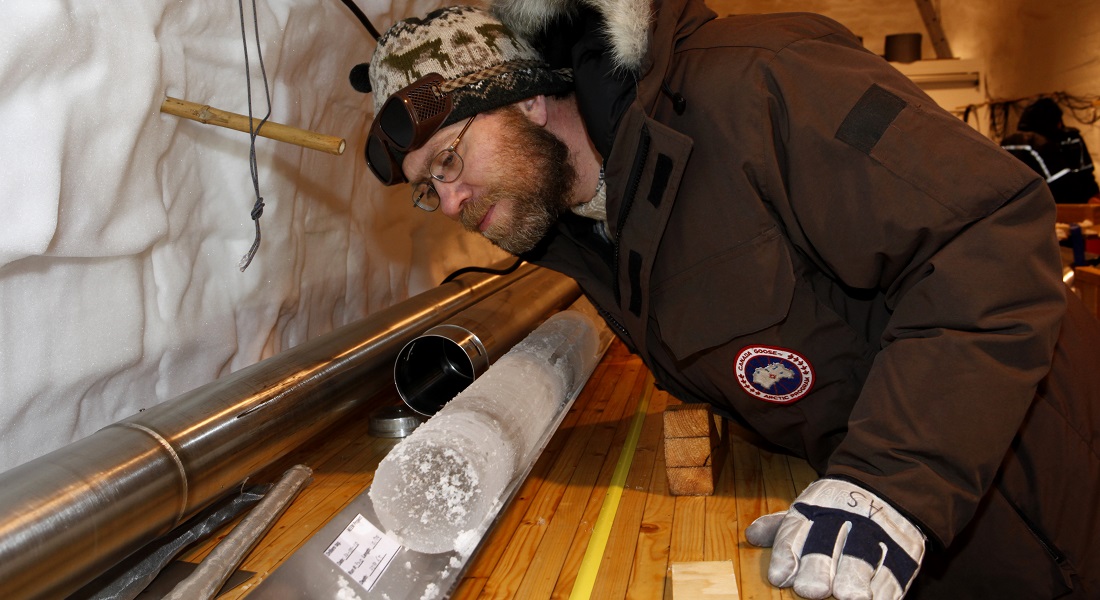Ancient ice reveals scores of gigantic volcanic eruptions
Ice cores drilled in Antarctica and Greenland have revealed gigantic volcanic eruptions during the last ice age. Sixty-nine of these were larger than any eruption in modern history. According to the University of Copenhagen physicists behind the research, these eruptions can teach us about our planet’s sensitivity to climate change.

For many people, the mention of a volcanic eruption conjures up doomsday scenarios that include deafening explosions, dark ash billowing into the stratosphere and gloopy lava burying everything in its path as panicked humans run for their lives. While such an eruption could theoretically happen tomorrow, we have had to make do with disaster films and books when it comes to truly massive volcanic eruptions in the modern era.
"We haven’t experienced any of history’s largest volcanic eruptions. We can see that now. Eyjafjellajökull, which paralysed European air traffic in 2010, pales in comparison to the eruptions we identified further back in time. Many of these were larger than any eruption over the last 2,500 years," says Associate Professor Anders Svensson of the University of Copenhagen’s Niels Bohr Institute.
By comparing ice cores drilled in Antarctica and Greenland, he and his fellow researchers managed to estimate the quantity and intensity of volcanic eruptions over the last 60,000 years. Estimates of volcanic eruptions more than 2,500 years ago have been associated with great uncertainty and a lack of precision, until now.
Sixty-nine eruptions larger than Mount Tambora
Eighty-five of the volcanic eruptions identified by the researchers were large global eruptions. Sixty-nine of these are estimated to be larger than the 1815 eruption of Mount Tambora in Indonesia – the largest volcanic eruption in recorded human history. So much sulfuric acid was ejected into the stratosphere by the Tambora eruption that it blocked sunlight and caused global cooling in the years that followed. The eruption also caused tsunamis, drought, famine and at least 80,000 deaths.
"To reconstruct ancient volcanic eruptions, ice cores offer a few advantages over other methods. Whenever a really large eruption occurs, sulfuric acid is ejected into the upper atmosphere, which is then distributed globally – including onto Greenland and Antarctica. We can estimate the size of an eruption by looking at the amount of sulfuric acid that has fallen," explains Anders Svensson.
In a previous study, the researchers managed to synchronize ice cores from Antarctica and Greenland – i.e., to date the respective core layers on the same time scale. By doing so, they were able to compare sulphur residues in ice and deduce when sulfuric acid spread to both poles after globally significant eruptions.

When will it happen again?
"The new 60,000-year timeline of volcanic eruptions supplies us with better statistics than ever before. Now we can see that many more of these great eruptions occurred during the prehistoric Ice Age than in modern times. Because large eruptions are relatively rare, a long timeline is needed to know when they occur. That is what we now have," says Anders Svensson.
One may be left wondering when the next of these massive eruptions will occur. But Svensson isn’t ready to make any concrete predictions:
"Three eruptions of the largest known category occurred during the entire period we studied, so-called VEI-8 eruptions (see fact box). So, we can expect more at some point, but we just don’t know if that will be in a hundred or a few thousand years. Tambora sized eruptions appears to erupt once or twice every thousand years, so the wait for that may be shorter.”
How was climate affected?
When powerful enough, volcanic eruptions can affect global climate, where there is typically a 5-10- year period of cooling. As such, there is great interest in mapping the major eruptions of the past – as they can help us look into the future.
"Ice cores contain information about temperatures before and after the eruptions, which allows us to calculate the effect on climate. As large eruptions tell us a lot about how sensitive our planet is to changes in the climate system, they can be useful for climate predictions," explains Anders Svensson.
Determining Earth's climate sensitivity is an Achilles heel of current climate models. Svensson concludes:
"The current IPCC models do not have a firm grasp of climate sensitivity – i.e., what the effect of a doubling of CO2 in the atmosphere will be. Vulcanism can supply us with answers as to how much temperature changes when Earths atmospheric radiation budget changes, whether due to CO2 or a blanket of sulphur particles. So, when we have estimated the effects of large volcanic eruptions on climate, we will be able to use the result to improve climate models."
FACTS:
- In all, the researchers identified 1,113 volcanic eruptions in Greenlandic ice cores and 740 eruptions in Antarctic ice cores over the past 60,000 years, where cores had sulfuric acid deposits greater than 20kg and 10kg per square kilometer, respectively.
- Eighty-five of the eruptions identified were observed by researchers at both of Earth's poles. Twenty-five of these were larger than any eruption in the past 2,500 years, while 69 were larger than the 1815 Tambora eruption, the largest volcanic eruption on record in the last 500 years.
- Their recent study is published in the journal, Climate of the Past.
- The researchers who contributed to the study are: Jiamei Lin, Anders Svensson, Christine S. Hvidberg, Johannes Lohmann, Steffen Kristiansen, Dorthe Dahl-Jensen, Jørgen P. Steffensen, Sune O. Rasmussen, Eliza Cook, Helle Astrid Kjær and Bo M. Vinther from the Niels Bohr Institute at the University of Copenhagen; Hubertus Fischer, Thomas Stocker, Michael Sigl and Matthias Bigler of the University of Bern, Switzerland; Mirko Severi and Rita Traversi of the University of Florence in Italy and Robert Mulvaney of the British Antarctic Survey in the UK.
Contact
Anders Svensson
Associate Professor
Niels Bohr Institute
University of Copenhagen
as@nbi.ku.dk
+45 35 32 06 16
Maria Hornbek
Journalist
Faculty of Science
University of Copenhagen
maho@science.ku.dk
+45 22 95 42 83
